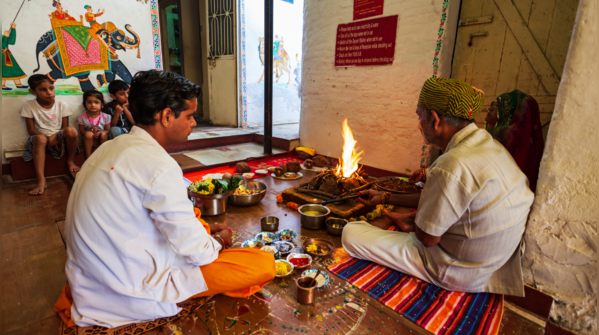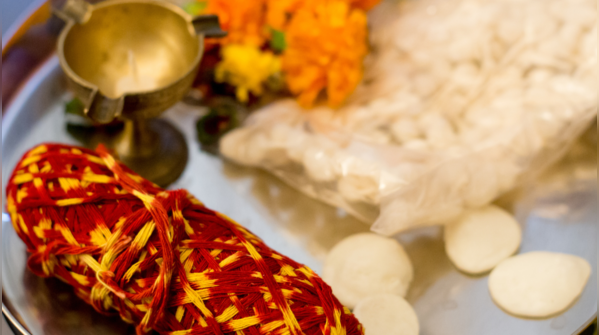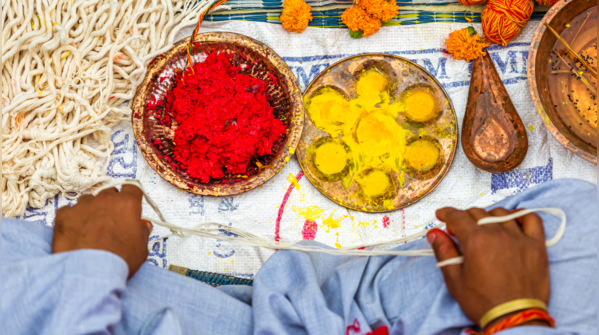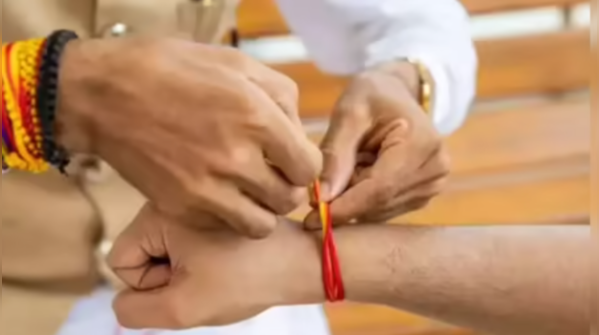
1/6
Hindu rituals and traditions
For Hindus around the world, Hinduism is a way of life. The prayers, the mantras, the chants, the traditions and rituals, all become a part of life as they grow up. Be it big events or small ceremonies, rituals and traditions never leave their hand, and performing these rituals correctly is considered very important.
Be it lighting a lamp or ringing the bell in the temple, some traditions never leave their side.

2/6
The Kalawa
A Kalawa is a sacred thread made of multiple strands, and is usually red or orange in colour. It is called ‘Raksha’, 'Raksha sutra’, ‘Mauli’, ‘Dhaaga’ or just ‘Kalawa’.
It is tied around the wrist, on the left or right hand depending on the person, and while tying it a certain mantra or chant is spoken by the priest or the elder person who ties it. In general, the kalawa is tied on the man’s hand on the right wrist, and on the woman’s hand on the left wrist. But this practice also changes from region to region.

3/6
When is the Kalawa tied?
Be it everyday worship in the home temple, or the elaborate yagya and hawans at home, the Kalawa is tied by a head priest or an elder person of the family. Whenever there are pujas at home or a temple, there are sanskars or rituals like ‘Naamkaran’, Abhishekam rituals, Janeu ritual, marriage, or the likes, a thread is tied on people’s wrists.
Even on festivals like Raksha bandhan, Navratri, etc, before the Puja takes place a thread is tied around the hand.
The priest chants Vedic mantras and then ties the thread on the hand, and then people take blessings from the priest by touching their feet or bowing in front of them.

4/6
Why is the Kalawa tied?
According to beliefs, traditions, and customs, the Kalawa is tied for many different reasons. But the most popular belief is that the Kalawa is a thread of protection. The Kalawa is a ‘Raksha sutra’ which is believed to help people evade the harmful effects of evil eye (nazar lagna), negative energies, disasters, and problems of life, and even certain illnesses.
It is also believed that the Kalawa keeps the body energetically pure, especially during religious activities, and prevents the entry of unwanted and negative energies during the ritual.

5/6
Blessings with the red colour
In Hinduism, there are certain colours that are believed to be extremely auspicious. Yellow, red, orange, and bright colours in general are said to be protective, pure, and give people a sense of strength. And so the Kalawa, with its bright red-yellow colour, is believed to shield people from harm and give them a sense of security.

6/6
How long to wear a Kalawa
Often you will see that people tie a kalawa in their wrist at one ritual and occasion, and only change it or remove it during the second ritual, keeping the same worn-down red thread on their hand. But, it is now said that a Kalawa should only be kept on your wrist for sometime, and then should either be removed or changed.
Many people believed that the thread should be worn for 7-21 days, not more, and definitely not after it has lost its colour and shine. Why? Because it is believed that as the red colours wear down, the Kalawa also loses its pure energy, and thus becomes a normal thread.
And even after removing it, the Kalawa should be kept under a sacred tree or near a plant.
Follow Us On Social Media

 6 hours ago
31
6 hours ago
31




























 English (US)
English (US)